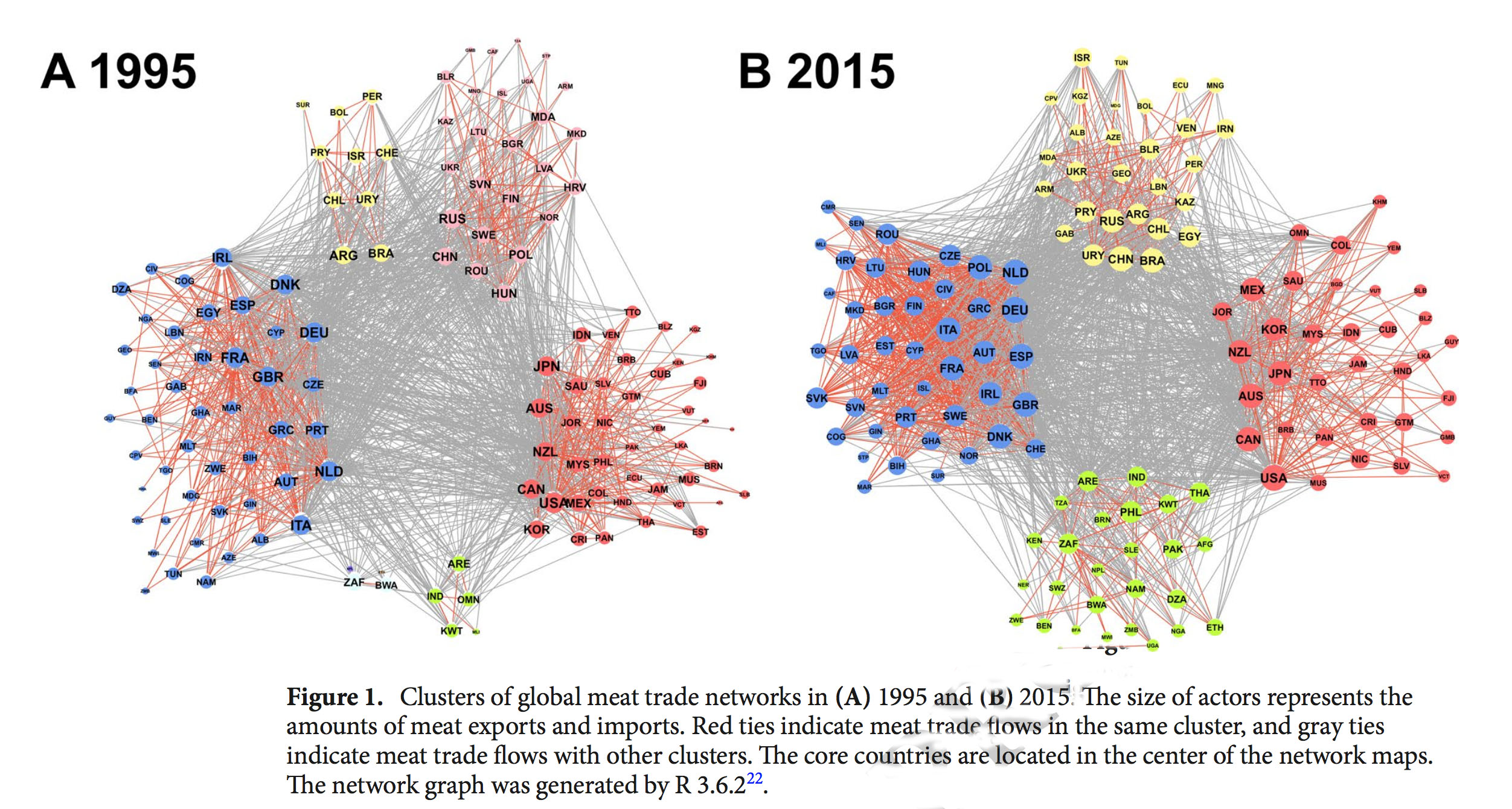Networks, clusters and how global meat markets tick
MSU researchers in Scientific Reports combined a network model approach with cluster analysis of meat trade in 134 countries from 1995 to 2015.

The world is leaning more toward serving carnivores as the global meat market grows. While reasons and trends abound, a group of Michigan State University (MSU) scientists dive deeply into the subtleties of how the global meat trade works, and what underlying forces drive it.
In this week’s Scientific Reports, sustainability scholars in MSU’s Center for Systems Integration and Sustainability combine a network model approach with network cluster analysis to better understand the unintended social and environmental consequences of a world that eats more meat and that is more metacoupled, meaning interconnected between adjacent or distant countries through meat trade.
combine a network model approach with network cluster analysis to better understand the unintended social and environmental consequences of a world that eats more meat and that is more metacoupled, meaning interconnected between adjacent or distant countries through meat trade.
“Identifying the countries that are responsible for increases in meat trade and the underlying forces driving these changes can help stakeholders and policy makers,” said first-author Min Gon Chung, who recently completed his PhD at MSU and now is a postdoctoral researcher at University of California, Merced. “Decision makers need this kind of in-depth information if they want to make efficient efforts across borders, if they want to conserve natural habitats in exporting countries and curb diet-related human health risks in importing countries simultaneously.”
The work will speak to fellow researchers and those seeking finely tuned analysis of how countries interact as they consume and sell meat products. The group showed that by merging network modeling including the analysis of clusters, that is, countries that interact with each other, the group has been able to identify sub-networks within the global meat trade network while also determining how these sub-networks have changed over time, according to co-author Ken Frank, MSU Foundation Professor of Sociometrics.
“Our network results provide strategic insights to better understand the unintended social and environmental consequences of increasing global meat trade,” Frank said. “The approach and findings contribute a better groundwork for sustainable meat trade in pursuit of improved human health and nature conservation.”
In addition to Chung and Frank, Kelly Kapsar and Jianguo “Jack” Liu contributed to “The spatial and temporal dynamics of global meat trade networks.”
The work was funded by the National Science Foundation, NASA, Environmental Science and Policy Program at Michigan State University, Sustainable Michigan Endowment Project, and Michigan AgBioResearch.



 Print
Print Email
Email
